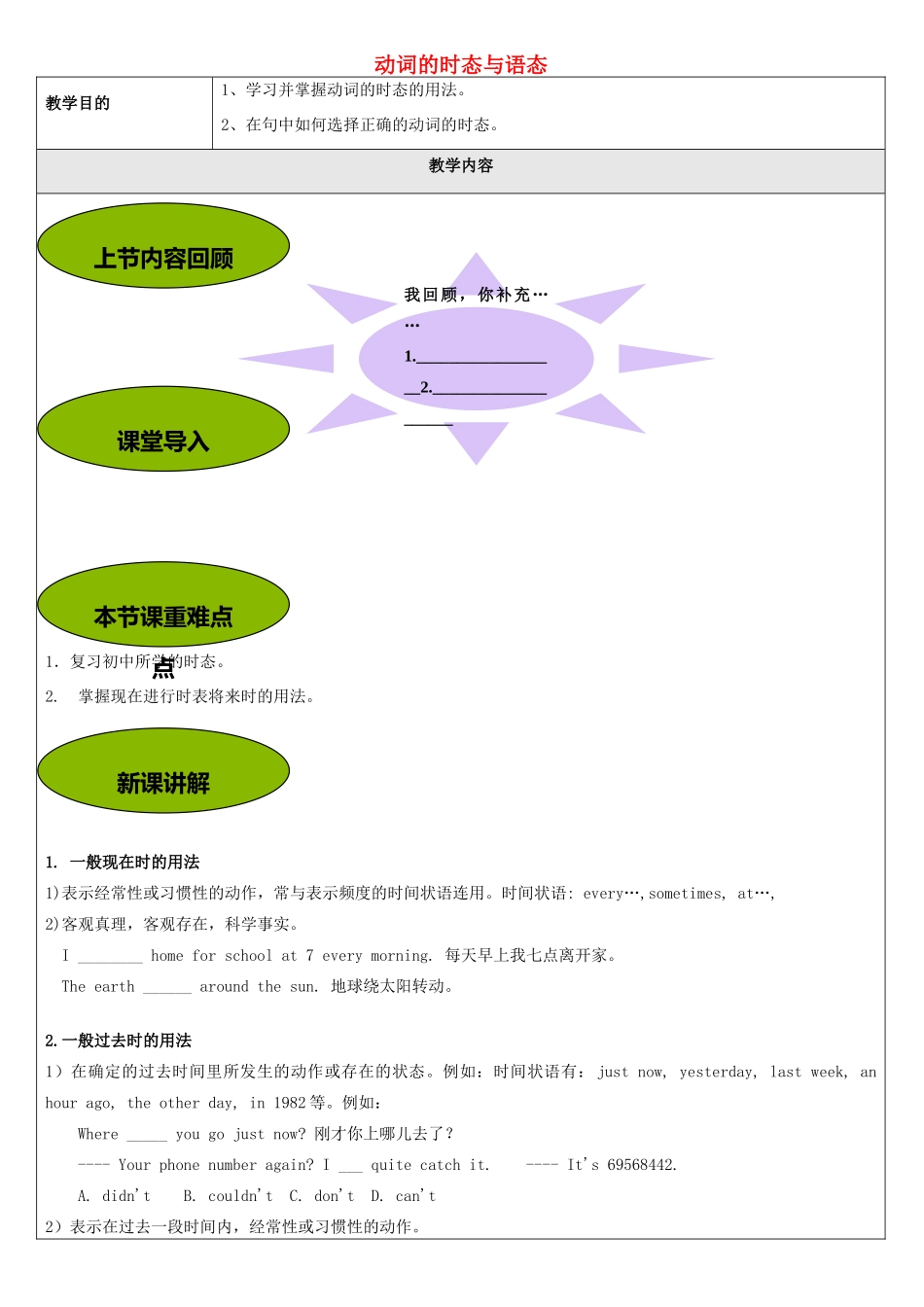动词的时态与语态教学目的1、学习并掌握动词的时态的用法。 2、在句中如何选择正确的动词的时态。教学内容1.复习初中所学的时态。2. 掌握现在进行时表将来时的用法。1. 一般现在时的用法1)表示经常性或习惯性的动作,常与表示频度的时间状语连用。时间状语: every…,sometimes, at…, 2)客观真理,客观存在,科学事实。 I ________ home for school at 7 every morning. 每天早上我七点离开家。The earth ______ around the sun. 地球绕太阳转动。2.一般过去时的用法 1)在确定的过去时间里所发生的动作或存在的状态。例如:时间状语有:just now, yesterday, last week, an hour ago, the other day, in 1982 等。例如:Where _____ you go just now? 刚才你上哪儿去了?---- Your phone number again? I ___ quite catch it. ---- It's 69568442. A. didn't B. couldn't C. don't D. can't2)表示在过去一段时间内,经常性或习惯性的动作。我回顾,你补充……1.__________________2.____________________课堂导入上节内容回顾本节课重难点点新课讲解When I ____ a child, I often _____ football in the street. 我是个孩子的时候,常在马路上踢足球。3)句型:It is time that sb. did sth. = It is time for sb. to do sth "到……时间了" "该……了"。It is time for you to go to bed. = It is time you _____ to bed.你早该睡觉了。4) would (had) rather sb. did sth. 表示'宁愿某人现在或将来做某事'。I'd rather you _______ tomorrow.还是明天来吧。5) used to + do:"过去常常"表示过去习惯性的动作或状态,但如今已不存在。例如:Mother used not to be so forgetful. 老妈过去没那么健忘。3. 一般将来时 1) will 表现在看来以后要发生的动作或存在的状态;事物的固有属性或必然趋势。 Tom will come back tomorrow. Fish will die without water.2) be going to +动词原形,表示______________;____________________。a. __________。例如:What are you going to do tomorrow? 明天打算作什么呢? b. ______。例如:The play is going to be produced next month。这出戏下月开播。 c. ________________。例如:Look at the dark clouds, ther...


